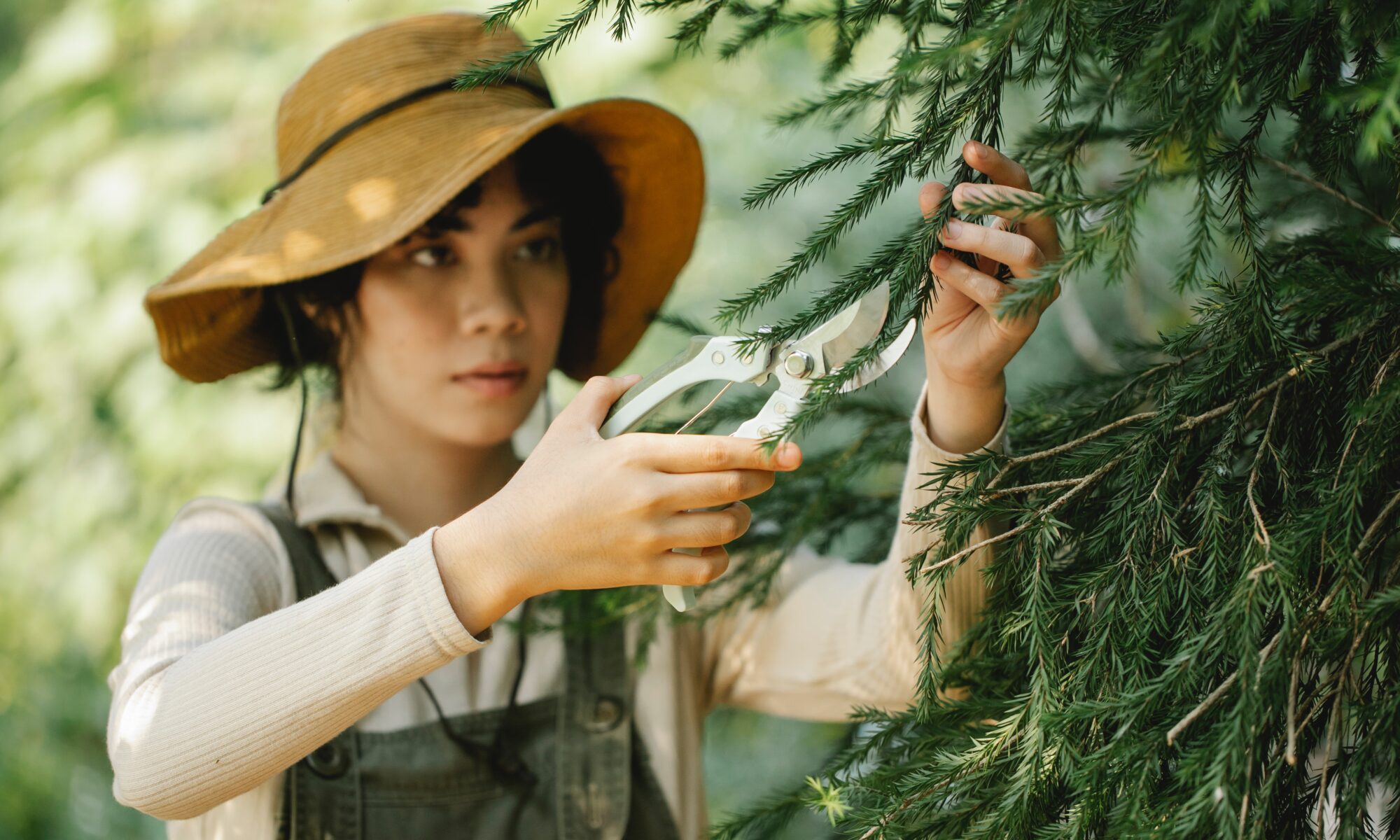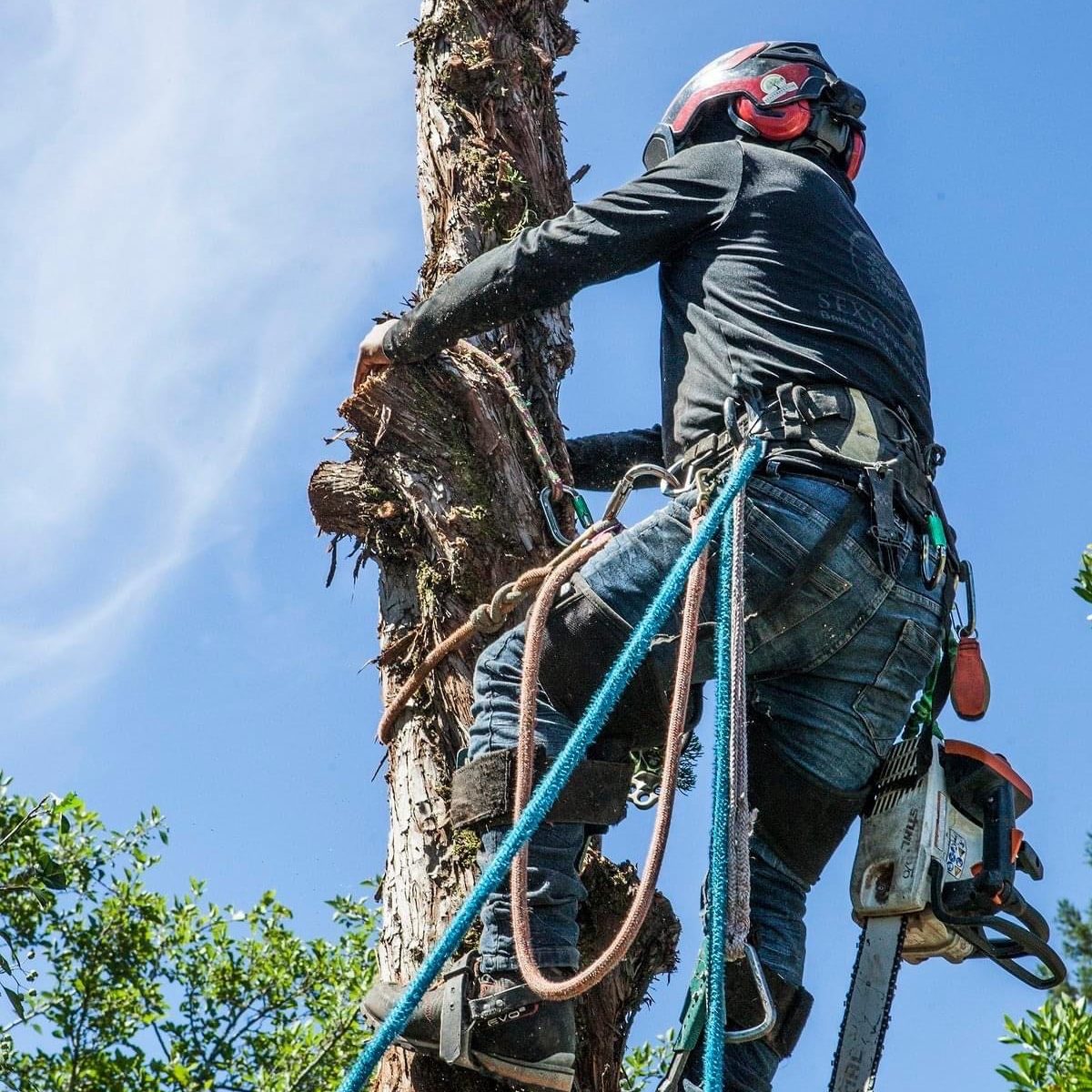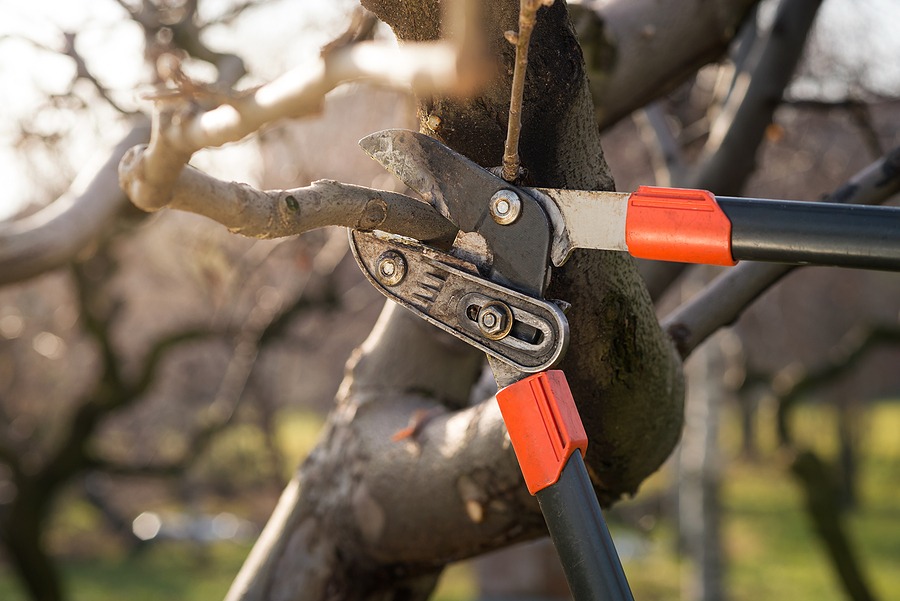Trees are the lifeblood of any landscape, adding beauty, shade, and even increasing property value. But trees – especially young ones – need proper TLC to ensure they remain healthy and vibrant. Many homeowners unknowingly make mistakes that can harm their trees and lead to an unsightly or even dangerous landscape. In this blog post, we will discuss the top tree care mistakes to avoid, so you can maintain a thriving landscape for years to come.
1. Improper Watering Techniques
Overwatering
One of the most common tree care mistakes is overwatering. While it’s essential to keep your trees hydrated, too much water can lead to root rot, bug proliferation, and other diseases. To avoid overwatering, make sure you understand the specific watering needs of each tree species on your property. Generally, trees need about 1 inch of water per week, either from rainfall or supplemental watering. Be sure to water deeply and infrequently, rather than shallow and often, to encourage deep root growth.
🌱Did You Know? A strong, deep root system anchors the tree securely and allows it to access water and nutrients from deeper soil layers, enhancing its ability to withstand environmental stresses such as drought and strong winds.
Underwatering
Just as overwatering can cause problems, so can underwatering. Trees that don’t receive enough water are more susceptible to pests and diseases, and can even die from drought stress. Check your trees’ soil regularly to ensure it’s moist but not waterlogged. If your area is experiencing a dry spell, be sure to provide extra water to your trees, especially during the hot summer months. Using mulch around the base of your trees can help retain moisture and reduce the need for frequent watering.
2. Incorrect Pruning Practices
Over-pruning
Over-pruning is another common tree care mistake. Removing too many branches at once can stress the tree and make it more vulnerable to disease and pests. As a rule of thumb, never remove more than 25% of a tree’s foliage in a single pruning session. Additionally, avoid “topping” or cutting back a tree’s main branches, as this can lead to weak, unstable growth.
Improper Pruning Cuts
Making improper pruning cuts can also harm your trees. When pruning, always cut just outside the branch collar – the slightly swollen area where the branch connects to the trunk. Cutting too close to the trunk can damage the tree’s bark and expose it to infection. Conversely, leaving a large stub can also lead to decay and disease. Remember to use sharp, clean tools when pruning to prevent the spread of disease and to make clean cuts that heal more quickly.
Pruning at the Wrong Time
Timing is important when it comes to tree pruning. Pruning at the wrong time of year can put your trees at risk for disease or hinder their growth. Generally, the best time to prune most trees is during their dormant season, typically late winter or early spring. However, some species may have specific pruning requirements, so be sure to research the best time to prune the trees in your landscape.
3. Neglecting Pest and Disease Control
Ignoring Signs of Pests or Disease
One of the biggest mistakes homeowners make is ignoring signs of pests or disease in their trees. Early detection and intervention are crucial to preventing these issues from becoming severe. Look out for signs like discolored or damaged leaves, oozing sap, and holes or tunnels in the bark. If you notice any of these symptoms, consult a professional arborist for advice on treatment options.
🦟 Did You Know? Pests are harmful to trees as they can damage their leaves, bark, and roots, weakening the tree’s overall health and ability to grow. Furthermore, some pests can transmit diseases or create entry points for pathogens, which can lead to severe infections or even tree death.
Overusing Chemical Treatments
While it’s important to address pest and disease issues, overusing chemical treatments can cause more harm than good. Some chemicals can be harmful to beneficial insects and even the trees themselves. Always follow the recommended dosage and application instructions for any chemical treatment, and consider using organic or natural alternatives when possible. Integrated Pest Management (IPM) strategies, which combine cultural, biological, and chemical methods, can be a more sustainable and effective approach to maintaining tree health.
Not Monitoring for Invasive Species
Invasive pests and diseases significantly damage your trees and the surrounding ecosystem. Stay informed about any invasive species that may be present in your area, and take steps to prevent their introduction and spread. If you suspect an invasive pest or disease is affecting your trees, contact your local extension office or a professional arborist for guidance on appropriate management strategies.
4. Damaging Tree Roots
Compacting Soil Around Trees
Compacted soil around trees can hinder root growth and prevent water and nutrients from reaching the roots. Avoid driving or parking vehicles near your trees, and minimize foot traffic around the root zone. If you suspect your soil is compacted, consider aerating the area to improve air and water penetration. Adding organic matter, such as compost or well-rotted manure, can also help improve soil structure and promote healthy root growth.
Cutting Roots During Construction
Construction projects near trees can inadvertently damage their root systems, leading to tree decline or even death. Before beginning any construction, consult an arborist to determine the best way to protect your trees and their roots during the project. Establishing a tree protection zone around the tree’s critical root zone can help minimize damage during construction.
5. Planting Trees Incorrectly
Planting Too Deep
Planting a tree too deep can lead to a variety of problems, including root girdling, poor nutrient uptake, and increased susceptibility to pests and diseases. When planting a tree, ensure that the root flare – the point where the trunk begins to widen at the base – is visible above the soil line. This will allow for proper root development and promote overall tree health.
Choosing the Wrong Tree for Your Site
Selecting the right tree for your landscape is crucial to its long-term health and success. Consider factors such as the tree’s mature size, growth rate, and environmental requirements when choosing a species to plant. Planting a tree that is not well-suited to your site can lead to a host of problems, including stunted growth, increased susceptibility to pests and diseases, and potential damage to nearby structures as the tree grows.
6. Failing to Protect Your Trees from Wildlife
Damage from Deer and Rodents
Deer and rodents can cause significant damage to your trees, especially during the winter months when food sources are scarce. Protect young trees by installing tree guards or fencing to deter browsing and gnawing. Repellents can also be effective, but may need to be reapplied frequently, especially after rain or snow.
Bird Damage
While birds are generally beneficial to your landscape, some species can cause damage to trees by pecking at the bark or nesting in tree cavities. If bird damage is a concern, try using visual or auditory deterrents to scare them away. Be sure to monitor their effectiveness and adjust your strategy as needed.
By avoiding these common tree care mistakes, you can help ensure that your trees remain healthy, beautiful, and structurally sound for years to come. Remember that proper tree care starts with understanding the specific needs of the trees in your landscape and being proactive in addressing potential problems.
If you’re unsure about how to care for your trees, consult the professional arborists at Sexy Trees for guidance and assistance. With the right care and attention, your trees can thrive and become an invaluable asset to your property and the environment.
 Bringing Sexy Back Into Your Yards
Bringing Sexy Back Into Your Yards 


